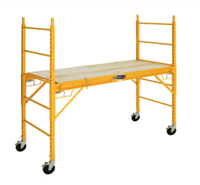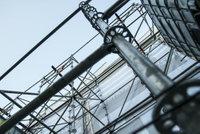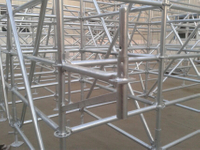Content Menu
● What Is a Mobile Scaffold Tower?
● Tools and Materials Needed
● Step-by-Step Guide to Building a Mobile Scaffold Tower
>> Step 1: Prepare the Site
>> Step 2: Assemble the Base Frame
>> Step 3: Install Diagonal Braces
>> Step 4: Add the Next Frame Sections
>> Step 5: Install the First Platform
>> Step 6: Install Guardrails and Midrails
>> Step 7: Add Additional Levels (If Required)
>> Step 8: Install the Access Ladder
>> Step 9: Final Safety Checks
● Safety Considerations
● Maintenance Tips
● Integration with Different Scaffolding Systems
● Conclusion
● FAQ
>> 1. How many people are needed to build a mobile scaffold tower?
>> 2. Can I move the scaffold tower while someone is on it?
>> 3. What is the maximum height for a mobile scaffold tower?
>> 4. How do I ensure the scaffold tower is level?
>> 5. What safety equipment should I wear when building or using a scaffold tower?
Building a mobile scaffold tower is a fundamental skill for construction workers, maintenance personnel, and DIY enthusiasts who need safe, elevated platforms for various tasks. Mobile scaffold towers offer portability, flexibility, and ease of assembly, making them ideal for both indoor and outdoor work. This comprehensive guide will walk you through the step-by-step process of building a mobile scaffold tower safely and efficiently. We will also discuss essential safety considerations, tools required, maintenance tips, and integration with various scaffold systems.
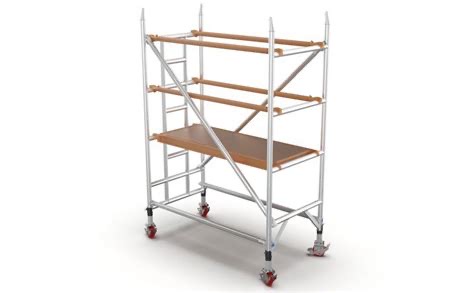
What Is a Mobile Scaffold Tower?
A mobile scaffold tower is a freestanding scaffold structure mounted on wheels (castors) that can be easily moved around a worksite. It consists of modular frames, braces, platforms, guardrails, and stabilizers (outriggers) for added safety at height. The tower can be assembled to various heights depending on the work requirements.
Tools and Materials Needed
Before starting assembly, ensure you have the following:
- Mobile scaffold tower kit (frames, braces, platforms, guardrails, castors)
- Adjustable spanners or scaffold wrenches (usually 21mm or 23mm)
- Spirit level for checking verticality and leveling
- Safety gear (helmet, gloves, harness if required)
- Outriggers/stabilizers (for taller towers)
- Ladder (if not integrated)
Step-by-Step Guide to Building a Mobile Scaffold Tower
Step 1: Prepare the Site
- Clear the area of debris and obstacles.
- Ensure the ground is level and firm. Use base plates if on soft ground.
- Check for overhead hazards such as power lines.
Step 2: Assemble the Base Frame
- Insert castors into the base frames and lock the wheels.
- Attach horizontal braces to the base frames just above the bottom rung, ensuring the snap hooks face outwards.
- Connect two base frames with horizontal braces to form a stable rectangular base.
Step 3: Install Diagonal Braces
- Attach diagonal braces to opposite corners of the base frame to stabilize the structure.
- Use the spirit level to check that the base is square and level.
- Adjust castors as necessary to achieve perfect leveling.
Step 4: Add the Next Frame Sections
- Stack the next set of frames on top of the base frames.
- Secure them with locking clips or pins.
- Attach horizontal and diagonal braces at the new level to maintain stability.
Step 5: Install the First Platform
- Place the platform at the lowest working height (usually around 1 meter).
- Ensure the platform is securely locked into place.
- If the platform has a trapdoor, ensure it opens safely for ladder access.
Step 6: Install Guardrails and Midrails
- Attach guardrails and midrails on all open sides of the platform.
- Ensure all rails are securely fastened to prevent falls.
Step 7: Add Additional Levels (If Required)
- Repeat the process of adding frames, braces, platforms, and guardrails for additional height.
- For towers taller than 2 meters, install outriggers to increase base width and stability.
- Always follow manufacturer guidelines for maximum height and safety.
Step 8: Install the Access Ladder
- Insert the ladder through the trapdoor platform.
- Secure the ladder with provided braces or clips.
- Ensure the ladder is stable and safe to climb.
Step 9: Final Safety Checks
- Verify all locking clips and braces are secure.
- Check that the tower is vertical using the spirit level.
- Confirm that castors are locked and outriggers are properly deployed.
- Attach “Unsafe to Use” or “Safe to Use” tags as per site protocols.
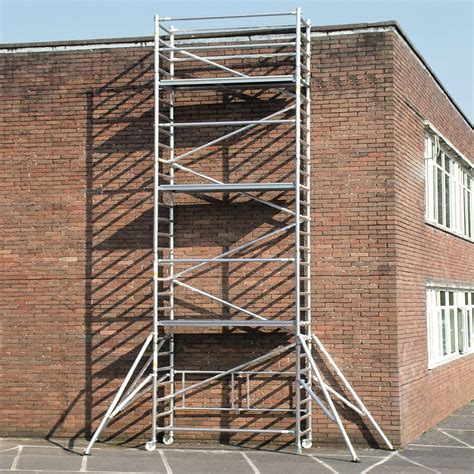
Safety Considerations
- Never exceed the manufacturer's recommended height-to-base width ratio (usually 4:1).
- Use outriggers for towers taller than 2 meters.
- Always wear appropriate personal protective equipment (PPE).
- Do not move the scaffold tower with workers on it unless specifically designed for that purpose.
- Inspect the scaffold daily before use for damage or wear.
- Train all users on safe scaffold practices.
Maintenance Tips
- Clean scaffold components regularly to prevent corrosion.
- Store scaffold parts in a dry, covered area.
- Replace any damaged or bent frames, braces, or platforms immediately.
- Lubricate moving parts such as castors to ensure smooth operation.
Integration with Different Scaffolding Systems
Mobile scaffold towers can integrate with various scaffolding systems to enhance versatility and safety. Some common systems include:
- BS Standard Scaffold Tubes: These provide robust and customizable structures compatible with mobile towers.
- Cuplock Scaffolding Fittings: Known for quick and secure connections, ideal for modular mobile towers.
- Aluminum Scaffolding Boards: Lightweight and durable platforms that improve portability.
- Layher Metric Allround System: Offers flexibility for complex configurations and high load capacity.
- Liba Scaffolding System: Modular design facilitating rapid assembly and disassembly.
Understanding these systems helps optimize scaffold tower setup for specific project requirements.
Conclusion
Building a mobile scaffold tower requires careful planning, proper tools, and adherence to safety standards. By following the step-by-step instructions outlined above, you can assemble a stable, safe, and efficient scaffold tower suitable for a wide range of tasks. Remember to always prioritize safety, use appropriate PPE, and consult manufacturer guidelines and local regulations to ensure compliance.
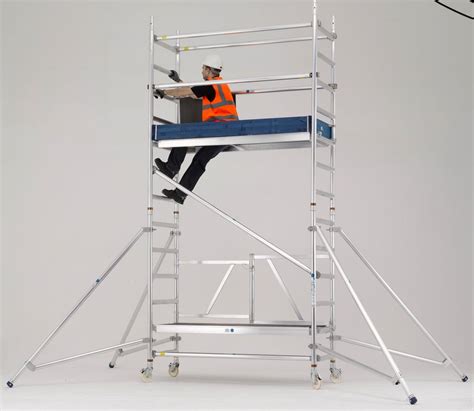
FAQ
1. How many people are needed to build a mobile scaffold tower?
Answer: At least two trained persons are recommended to safely assemble a mobile scaffold tower, especially for heights above 2 meters.
2. Can I move the scaffold tower while someone is on it?
Answer: Generally, no. Moving a scaffold tower with workers on it is unsafe unless the tower is specifically designed and certified for such use.
3. What is the maximum height for a mobile scaffold tower?
Answer: Typically, up to 12 meters indoors and 8 meters outdoors with outriggers, but always follow manufacturer and local regulations.
4. How do I ensure the scaffold tower is level?
Answer: Use a spirit level on the base frames and adjust the castor nuts to level the tower before assembly.
5. What safety equipment should I wear when building or using a scaffold tower?
Answer: Hard hat, gloves, non-slip footwear, and fall arrest harnesses if working at height beyond regulatory limits.













